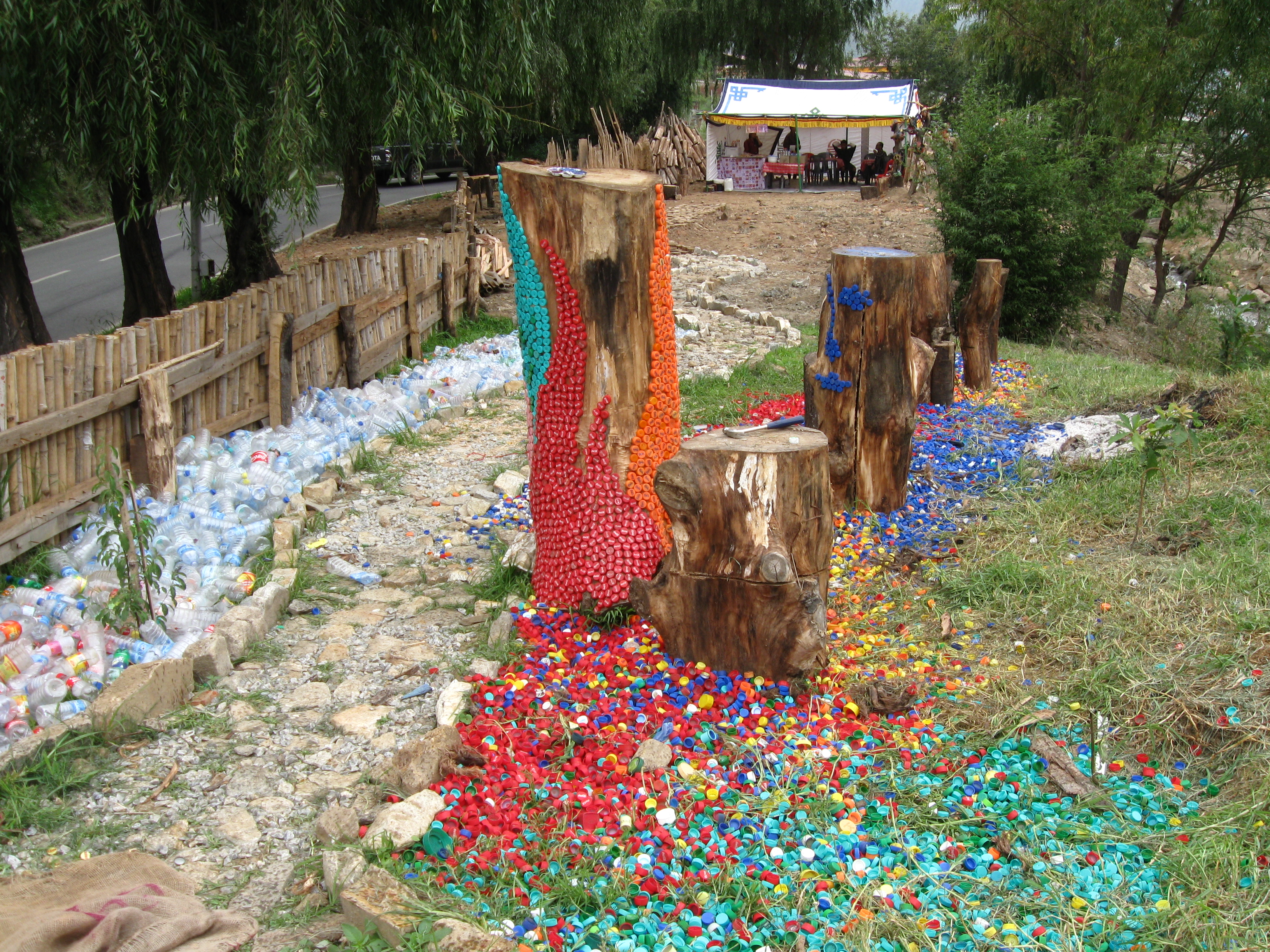Brightly colored plastic bottle caps nailed to stumps line one side of a footpath and plastic bottles the other. Both the park and the public art in the picture here are the result of the work of Bhutanese artists affiliated with Voluntary Artists' Studio, Thimphu (VAST), a Bhutanese art NGO, for a public event and fundraiser commemorating the wedding anniversary of Bhutan's king in 2013. Like other forms of "public culture", the park and the art within it show the ways in which "art" as a global form becomes embedded in local meanings (1). Specifically, art in Bhutan is an important medium for working out questions of identity and what values ought to define public culture in Bhutan.
The park itself is a symbol of how the artists at VAST are part of a broader process of figuring out what it means to be a citizen in Bhutan's newly minted democracy. All other parks and public spaces in Thimphu were the work of the state, officially sanctioned. However, the art park was a response completely out of the initiative of the artists at VAST. After the trees in this section of the river bank were cut down, the artists adopted it, hoping to transform the ugly scar to a beautiful community space. The park was meant to create a space to display public art and provide community access to the river, and thereby, to nature.
In many ways, taking this act independently represents new, liberal values about independent thinking and individual responsibility or gyenkhu that are radically new in Bhutanese public culture. The artwork itself fashioned from plastic bottles and bottle caps is part of a broader project lead by one of VAST's founders, Kama Wangdi, who runs a competition to see who can collect the largest number of bottles for recycling. Both the artwork and the competition suggest that environmental issues are something individuals should take responsibility for.
At the same time, the image above shows how artists present themselves as properly Bhutanese. Policies of environmental protection have become an important part of national identity in Bhutan and form one of the key pillars of the official development ideology that emphasizes "Gross National Happiness" over Gross National Product. Likewise, the art park has deep ties to the monarchy. The tent in the background of this picture is part of an event commemorating the wedding anniversary of the fifth king. VAST also partnered with the royal-backed Tarayana Foundation to host the event pictured. Events like this are both acts of genuine patriotism and important way artists present themselves as part of the normal, moral expectations of Bhutanese national life. Since the transition to democracy in 2008, Bhutanese have had to figure out what it means to be Bhutanese and what values define public life. The art park is one example of what that negotiation can look like.
1) Appadurai, Arjun and Carol A. Breckenridge, "Why Public Culture?". Public Culture 1, no. 1 (1988): 5-9.

Commentary on Rachel Tanur's Works: NYC Cow Parade